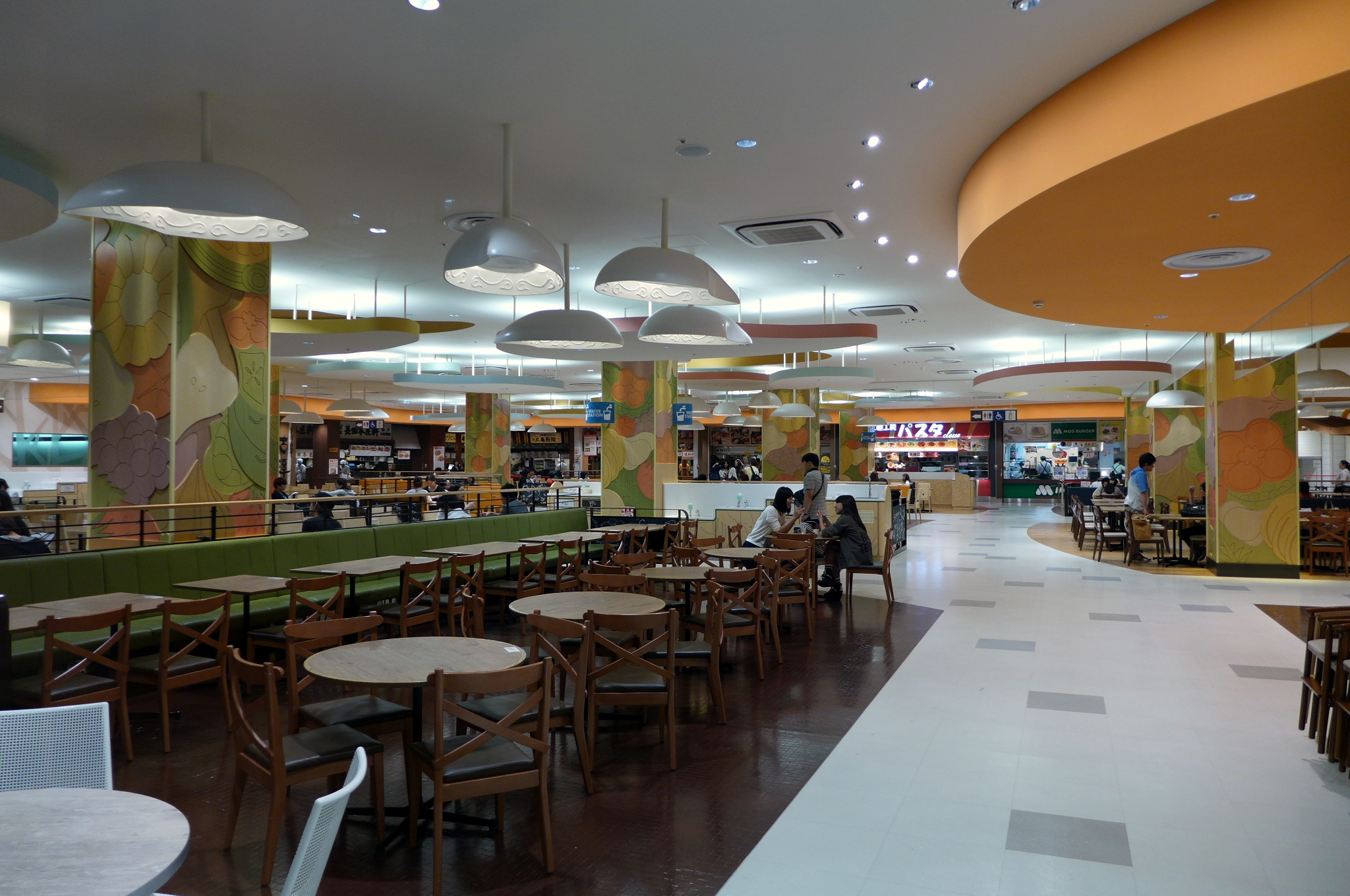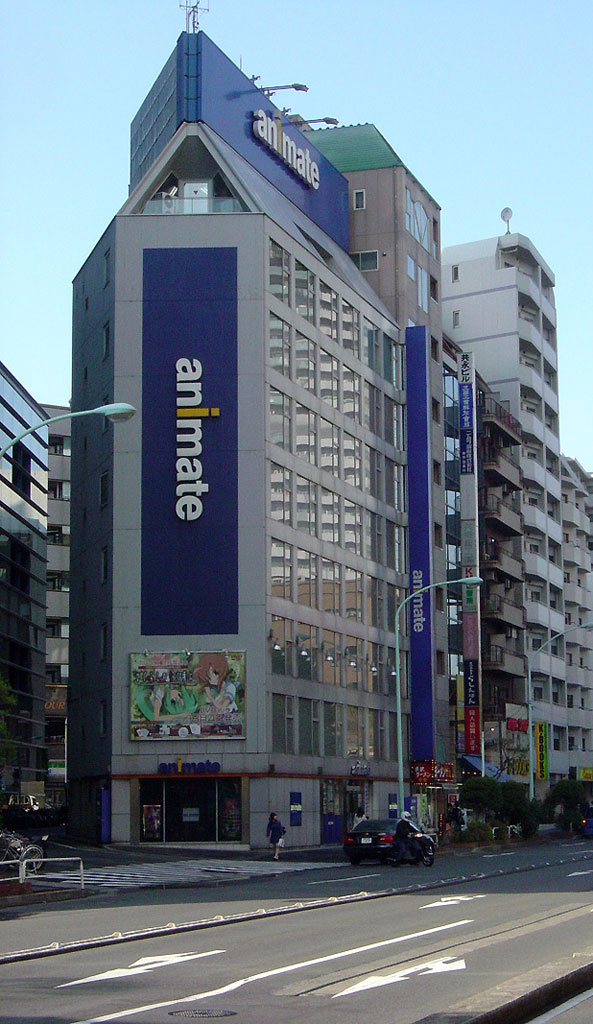|
Abeno Cues Town
is the name of in Abeno-ku, Osaka, Japan. Overview Abeno Cues Town consists of and . Via Abeno Walk is the area for the local tenants, and Q's Mall is the area the specific architect, Tokyu Land Corporation, manages. The area opened on April 26, 2011. This shopping area is connected to Tennoji Station operated by Osaka Metro by the underground passage. The area is connected to the pedestrian bridge (pre-opened on February 1, 2012, and completed on April 24, 2013) via the Abeno A1 Area Urban Redevelopment Project A1-2 Building (Abeno nini) opened on February 1, 2012 along with the elevated walkway between Cues Town and Abeno nini. The other passage was opened on March 15, 2014 to connect to Abeno Station on the Osaka Metro Tanimachi Line. Access *Osaka Metro: Tennoji Station ( Midosuji Line, Tanimachi Line), Abeno Station (Tanimachi Line) *JR West: Tennoji Station (Yamatoji Line, Osaka Loop Line, Hanwa Line) * Kintetsu Minami Osaka Line: Osaka Abenobashi Station *Hankai Ue ... [...More Info...] [...Related Items...] OR: [Wikipedia] [Google] [Baidu] |
Abeno-ku, Osaka
is one of 24 wards of Osaka, Japan. It is located in southern Osaka city and has a population of over 107,000. In the northern part of Abeno, Abenobashi, there is the Kintetsu Minami Osaka Line which terminates at Abenobashi Station, the Midōsuji Line and Tanimachi Line of the Osaka Municipal Subway at Tennoji Station, and the Hankai Tramway's Uemachi Line which terminates at Tennoji-eki-mae Station. The Abenobashi area of Abeno is a commercial area where department stores and movie theatres are located. Abeno is a home for Sharp Corporation ( Nagaike-cho). History When Osaka city increased its number of wards from 15 to 22 on April 1, 1943, Sumiyoshi ward was divided into three "new" wards, one of which was Abeno, the others being Higashi-Sumiyoshi ward and Sumiyoshi ward. There are varying theories as to the origin of the name "Abeno". One is that it was the name of a powerful family-clan in ancient Japan, another suggests it might come from one of Yamabe no Akahito's so ... [...More Info...] [...Related Items...] OR: [Wikipedia] [Google] [Baidu] |
Kintetsu Railway
, referred to as , is a Japanese passenger railway company, managing infrastructure and operating passenger train service. Its railway system is the largest in Japan, excluding Japan Railways Group. The railway network connects Osaka, Nara, Kyoto, Nagoya, Tsu, Ise, and Yoshino. Kintetsu Railway Co., Ltd. is a wholly owned subsidiary of Kintetsu Group Holdings Co., Ltd. History On September 16, 1910, was founded and renamed a month after. Osaka Electric Tramway completed Ikoma Tunnel and started operating a line between Osaka and Nara (present-day Nara Line) on April 30, 1914. The modern Kashihara, Osaka, and Shigi lines were completed in the 1920s, followed by the Kyoto Line (a cooperative venture with Keihan Electric Railway). Daiki founded in 1927, which consolidated on September 15, 1936. In 1938, Daiki teamed up with its subsidiary to operate the first private railway service from Osaka to Nagoya. Another subsidiary Sankyū bought Kansai Express Electric Railway ... [...More Info...] [...Related Items...] OR: [Wikipedia] [Google] [Baidu] |
Shopping Centres In Japan
Shopping is an activity in which a customer browses the available goods or services presented by one or more retailers with the potential intent to purchase a suitable selection of them. A typology of shopper types has been developed by scholars which identifies one group of shoppers as recreational shoppers, that is, those who enjoy shopping and view it as a leisure activity.Jones, C. and Spang, R., "Sans Culottes, Sans Café, Sans Tabac: Shifting Realms of Luxury and Necessity in Eighteenth-Century France," Chapter 2 in ''Consumers and Luxury: Consumer Culture in Europe, 1650-1850'' Berg, M. and Clifford, H., Manchester University Press, 1999; Berg, M., "New Commodities, Luxuries and Their Consumers in Nineteenth-Century England," Chapter 3 in ''Consumers and Luxury: Consumer Culture in Europe, 1650-1850'' Berg, M. and Clifford, H., Manchester University Press, 1999 Online shopping has become a major disruptor in the retail industry as consumers can now search for product ... [...More Info...] [...Related Items...] OR: [Wikipedia] [Google] [Baidu] |
Buildings And Structures In Osaka
A building, or edifice, is an enclosed structure with a roof and walls standing more or less permanently in one place, such as a house or factory (although there's also portable buildings). Buildings come in a variety of sizes, shapes, and functions, and have been adapted throughout history for a wide number of factors, from building materials available, to weather conditions, land prices, ground conditions, specific uses, prestige, and aesthetic reasons. To better understand the term ''building'' compare the list of nonbuilding structures. Buildings serve several societal needs – primarily as shelter from weather, security, living space, privacy, to store belongings, and to comfortably live and work. A building as a shelter represents a physical division of the human habitat (a place of comfort and safety) and the ''outside'' (a place that at times may be harsh and harmful). Ever since the first cave paintings, buildings have also become objects or canvasses of much artist ... [...More Info...] [...Related Items...] OR: [Wikipedia] [Google] [Baidu] |
Tokyu Group
The is a railway keiretsu whose parent company is the Tokyu Corporation railway company, which links Tokyo and its suburbs. Many companies in the group are designed to enhance the value of the Tokyu rail network. In addition to the railroad system, the group includes other companies in transportation, real-estate, retail, leisure, and cultural endeavors. Here is a partial list of companies in the Tokyu Group. Transportation * Tokyu Railways, a major private railway operator in the Greater Tokyo Area * Izukyū Corporation, a railway in Shizuoka Prefecture * Ueda Kotsū (Holding company of Ueda Electric Railway etc.), in Nagano Prefecture * Tokyu Bus * Tokyu Transsés in Shibuya * Tokyu Shachi Bus, a charter bus service in the greater Nagoya metro area * Jōtetsu (in Sapporo, Hokkaido) * Sōya Bus (in Wakkanai, Hokkaido) * Hokkaido Kitami Bus (in Kitami, Hokkaido) * Abashiri Kōtsū (in Abashiri District, Hokkaido) * Shari Bus (in Shari, Shari District) Real estate * Tokyu L ... [...More Info...] [...Related Items...] OR: [Wikipedia] [Google] [Baidu] |
List Of Shopping Malls In Japan
This is a list of shopping malls and shopping centers in Japan. Shopping malls in Japan * Lalaport, Tokyo Bay in Minami-Funabashi * Abeno Cues Town * Æon Mall, Æon Mall Kyoto Gojō and 143 places in nationwide. * Ario, 18 places in Sapporo, Sendai, Grea''ter Tokyo area, Nagano Prefecture, Osaka Prefecture and Kurashiki. * Bell Mall, Utsunomiya * Canal City Hakata * DiverCity Tokyo Plaza, Odaiba * Grandberry Park, Minami-Machida * HEP Five * Landmark Plaza, Minato Mirai 21 * Lalaport, Lalagarden, Lala Terrace, 19 places in Greater Tokyo area, Kansai region, Sendai and Iwata. * Lazona Kawasaki Plaza * Nikke Colton Plaza * Palette Town, Tokyo * Queen's Square, Yokohama * Seiyu Group * Shonan Mall Fill * Yaesu Chikagai * Yanagase'' * Yebisu Garden Place * Youme Town, 64 places in Kyushu, Shikoku and Chūgoku region, western Japan. See also * Lists of shopping malls References {{portalbar, Companies, Japan, Lists Japan Shopping malls Shopping malls A ... [...More Info...] [...Related Items...] OR: [Wikipedia] [Google] [Baidu] |
Underground City
An underground city is a series of linked subterranean spaces that may provide a defensive refuge; a place for living, working or shopping; a transit system; mausolea; wine or storage cellars; cisterns or drainage channels; or several of these. Underground cities may be currently active modern creations or they may be historic including ancient sites, some of which may be all or partially open to the public. The term may also refer to a network of tunnels that connects buildings beneath street level that may house office blocks, shopping malls, metro stations, theatres, and other attractions. These passages can usually be accessed through the public space of any of the buildings connecting to them, and sometimes have separate entries as well. This latter definition encompasses many modern structures, whereas the former more generally covers tunnel systems from ancient times to the present day. Underground cities are especially functional in cities with very cold or hot clim ... [...More Info...] [...Related Items...] OR: [Wikipedia] [Google] [Baidu] |
Animate (retailer)
is the retailing arm of MOVIC and is the largest retailer of anime, video games and manga in Japan. The first and flagship store of Animate was opened in 1983 in Ikebukuro, a district in Tokyo, Japan. Retail stores Currently there are 117 Animate stores in Japan, four in mainland China (Beijing, Shanghai, Nanjing and Chengdu), two in Taiwan (Taipei and Taichung), two in Thailand (Bangkok and Rangsit), and one in Seoul, South Korea. Online stores Animate currently has two online stores: the animate Online Shop, which has been active since 2005, and animate International. Former stores * Sakaihigashi Station, Osaka *Los Angeles, California (closed in 2003) *Hong Kong (closed in 2020) Subsidiaries *Animate Film (アニメイトフィルム): An animation studio. * Libre Publishing (リブレ出版株式会社): Originally part of Biblos Co., Ltd. (株式会社ビブロス) Following the bankruptcy of Biblos on 5 April 2006 caused by the chain bankruptcy started by its parent ... [...More Info...] [...Related Items...] OR: [Wikipedia] [Google] [Baidu] |
Kintetsu Department Store
is a department store chain in the Kansai region, Japan. It is headquartered in Abenosuji Itchome, Abeno-ku, Osaka, Japan. History *January, 1920: was opened in front of Kyoto Station. *February, 1920: was founded. *1926: opened its own restaurant at Daiki Building in Uehommachi, Osaka. *1930: Kyoto Bussankan General Partnership opened branch store in Yanagase, Gifu. *September, 1931: Kyoto Bussankan General Partnership was renamed . *September 29, 1934: Marubutsu General Partnership was reorganised as . *1934: founded . *September, 1936: was opened in Uehommachi, Osaka. *November, 1937: Daitetsu Department Store was opened in Abeno, Osaka. *March, 1941: Daiki consolidated Sangu Kyuko Railway Company and was renamed , thus, Daiki Department Store was renamed . *April 1, 1944: Kankyu consolidated Daitetsu Department Store Company, thus, Kankyu Department Store was reestablished as and as . *June 1, 1944: Kankyu and Nankai Railway were consolidated to form . Kankyu Departme ... [...More Info...] [...Related Items...] OR: [Wikipedia] [Google] [Baidu] |
Abenobashi Terminal Building
is a multi-purpose commercial facility in Abenosuji Itchome, Abeno-ku, Osaka, Japan. It consists of the (main tenants: Osaka Abenobashi Station, Kintetsu Department Store Main Store Abeno Harukas Wing Building), (Miyako City Osaka Tennoji), and a 300 m (984 ft) tall skyscraper . The reconstruction began in January 9, 2010, and opened on March 7, 2014. The building is 300 meters tall and has 62 floors, it was the tallest building in Japan from 2014 to 2022, until Azabudai Hills Main Tower seize the title of the tallest building in Japan. It is the planned alternative station building of Ōsaka Abenobashi Station, the terminal of Kintetsu Minami Osaka Line. Its floor space is around 100,000 square meters, making it the biggest department store in Japan. It contains Kintetsu Department Store Main Store Abeno Harukas, Marriott International hotel, university campuses, and Sharp Corporation sales office. Name meaning The name of the skyscraper "Abeno Harukas" comes f ... [...More Info...] [...Related Items...] OR: [Wikipedia] [Google] [Baidu] |
Kansai Super
200px, A Kansai Super store located in Kōbe, Japan. is a supermarket chain named for the Kansai region of Japan where its stores are located. Its logo is a bird in the shape of a K. According to the Kansai Super website (http://www.kansaisuper.co.jp/index.php?mode=tenpo), as of 2011 it has 60 stores: 11 in Kōbe city, 17 in the greater Hanshin area of Hyogo Prefecture, 9 in the northern part of Ōsaka Prefecture, 14 in Ōsaka city, 5 in eastern Ōsaka, 3 in southern Ōsaka, and one in Nara The National Archives and Records Administration (NARA) is an " independent federal agency of the United States government within the executive branch", charged with the preservation and documentation of government and historical records. It i ..., Nara Prefecture. External links Kansai SuperCompany web site (Japanese). Supermarkets of Japan Retail companies established in 1959 Companies based in Hyōgo Prefecture Companies listed on the Osaka Exchange Companies listed on the ... [...More Info...] [...Related Items...] OR: [Wikipedia] [Google] [Baidu] |
Hankai Uemachi Line
The is a tramway line of Hankai Tramway Co., Ltd. in Osaka, Japan. History *September 20, 1900 – Osaka Horse Rail Co. (, ''Osaka Basha Tetsudo'') from Tennoji-nishimon-mae to Higashi-Tengachaya was opened, with gauge rails. *November 29, 1900 – The line was extended from Higashi-Tengachaya to Kamisumiyoshi (Present: Kaminoki). *December 27, 1902 – The line was extended from Kamisumiyoshi to Shimosumiyoshi (Later: Sumiyoshijinja-mae, Present: Sumiyoshi). *1907 – Renamed "Osaka Densha Rail Co." (), then "Naniwa Densha Tram Co." (). *February 1, 1908 – The line was abandoned for the gauge conversion to standard gauge and electrification. *December 24, 1909 – Nankai Railway consolidated Naniwa Densha Tram, then became the Uemachi Line. *October 1, 1910 – The Uemachi Line was reopened after the completion of the gauge conversion and electrification. Tram operations were restarted between Tennoji-nishimon-mae and Sumiyoshijinja-mae. *January 19, 1911 – Through operat ... [...More Info...] [...Related Items...] OR: [Wikipedia] [Google] [Baidu] |





